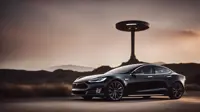India eyes rupee trade with 23 countries to ease dollar worries
24 Dec 2013
The commerce ministry has drawn up a list of 23 countries for trading in local currencies, in an effort to save the rupee from the rising dollar and to ease pressures of foreign exchange.
Under the currency swap arrangement, countries involved will trade in local currencies where they pay for exports and imports in their domestic units at pre-determined exchange rates instead of paying in US dollars.
The commerce ministry list includes oil exporting nations such as Angola, Algeria, Nigeria, Oman, Iran, Iraq, Venezuela, Qatar, Yemen and Saudi Arabia.
Other countries in the list include Russia, Japan, Singapore, Australia, Indonesia, South Korea, Malaysia, Mexico, South Africa and Thailand.
''The 23 countries have been identified based on how feasible a currency swap arrangement for exports and imports would be with each. Our emphasis has been on countries with which India has a sizeable trade deficit so that we end up saving foreign exchange,'' the official said.
A task force headed by special secretary Rajiv Kher had finalised a report on the currency swap arrangement and the finance ministry had wetted the report, which will now be finally approved by commerce minister Anand Sharma.
The commerce ministry will hold bilateral talks with the identified countries for the implementation of the currency swap.
A currency swap deal will work only if it is suitable for both countries. Both trading partners should have sufficient trade and investment interest between them.
India, faced with a precarious balance of payments position and a negative trade balance with most of its trading partners, found it worthwhile to trade in rupees with one of its major oil supplier Iran, but that was for strategic reasons, following trade sanctions imposed on the Islamic republic by western powers.
This, however, cannot be the norm and those countries that have a negative trade balance with India may not agree for rupee trade.
India's foreign exchange reserves have fallen by over $10.7 billion in the first half of the current fiscal due to a decline in net capital inflows.
Although the country's current account deficit has narrowed to 3.1 per cent of GDP in the first half of the fiscal, compared to 4.5 per cent in the first half of the previous year, the country's balance of payments (BoP) position is still precarious.



.webp)
.webp)

.webp)
.webp)

























